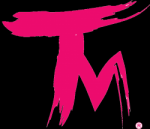
Trending. Courtesy of Henrik Vejlgaard
Chu: In layman’s terms, what is “culture mapping”?
Stock: In layman’s terms, it is a galaxy map of how people are thinking. We are simply organizing words like stars on a grid. The mapping reveals constellations. Those constellations are clusters of ideology. We use natural language processing and computational linguistics to map the words and quantify their interrelationships.. That data science helps make the picture of ideologies clearer. We developed this method to visualize patterns and chart trends as they emerge. It allows us to find important cultural signals earlier and use machine learning to augment that analysis so we can find patterns missed in traditional analysis. We received a utility patent for this method in 2015.

Tim Stock, Trend Forecaster Extraordinaire. Courtesy of HOPF Images
Chu: Could you tell us about how you established yourself in field of foresight?
Stock: It was an evolutionary process. I have always had a bit of a hybrid in skill set. By nature, as a musician, I have always seen things in patterns. Training in semiotics and cultural theory, compounded by the application of technology contributed to the bigger picture of establishing a context for trends. I have seen companies cycle through the last few decades from brand strategy to digital and mobile strategies to more recent obsessions around data science. My skills have converged to answer emerging issues that companies are seeking to solve. Having a framework for context is invaluable when conducting ethnographies across global markets. If you can read culture you can read how the future is unfolding.

The China Map

Trend Mapping. Image via Selective Attention
Chu: ScenarioDNA also hosts culture mapping workshops, what kinds of professionals should attend?
Stock: The main attendees of our workshops are coming from brands. They are typically trying to understand how to leverage culture better. They are flooded by trendspotting and want to make better sense of things. They get excited when they decode and apply the underlying meaning of trends. It helps them innovate.
For the all-encompassing [get it, get it?! insert major eye roll; it is lame yet we have no shame] version of this selected Sandy Chu file, continue reading right here!
You can find the Mapping Culture e-book here and scenarioDNA’s trend reports here.
Company and university culture mapping workshops can be arranged via email: culturemapping@scenariodna.com
One workshop is coming up on September 10 in London.
Originally written by Sandy Chu for Selective Attention, 2018. All rights reserved
Additional editing by Elsbeth van Paridon for Temper Magazine
About Selective Attention:
These days after writing B2B content for five years, Chu constantly thinks about the business takeaways in cultural trends, apparel products and around retail, which is making her life tragically tasteless in a melodramatic way that one can only describe as “hipster heartbreak”. With that in mind, Chu is trying to give herself some creative freedom to explore ideas for fun’s sake though she can’t help but include some On a Serious Note sort of content?
Having decided that writing a personal blog would be just too,,, light. Chu went out and bought herself a new domain — Selective Attention (.net though) so she can make this in to a blog publication. The idea is to make this a semi-fun (“oh, joy!” Quote, Chu herself) creative learning exercise which will help her develop her professional interests area’s depth of knowledge that will be written through the lens of personal rumination.
Featured image: Courtesy of The New York Times
Temper Magazine does not own any of the above English content. All featured English content was re-published by Temper Magazine and originally belongs to Sandy Chu for Selective Attention, 2018. All rights reserved.
- Pink Hair & “Pain Cities:” China’s Ultimate Fan Fashion Codes - December 7, 2025
- The FOMO Economy: How Pop-Ups & Crossovers Are Conquering China’s Consumer Heart - December 1, 2025
- School Uniforms in China: Ditching the Drab, Finding the Fab - October 25, 2025
